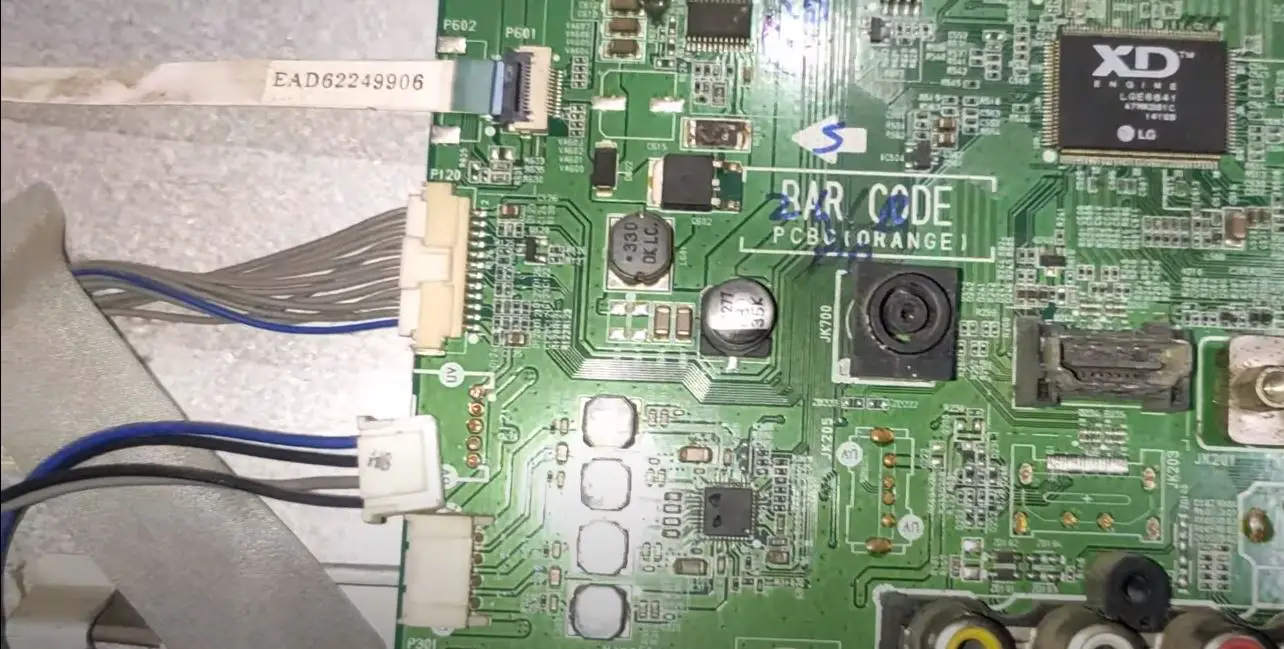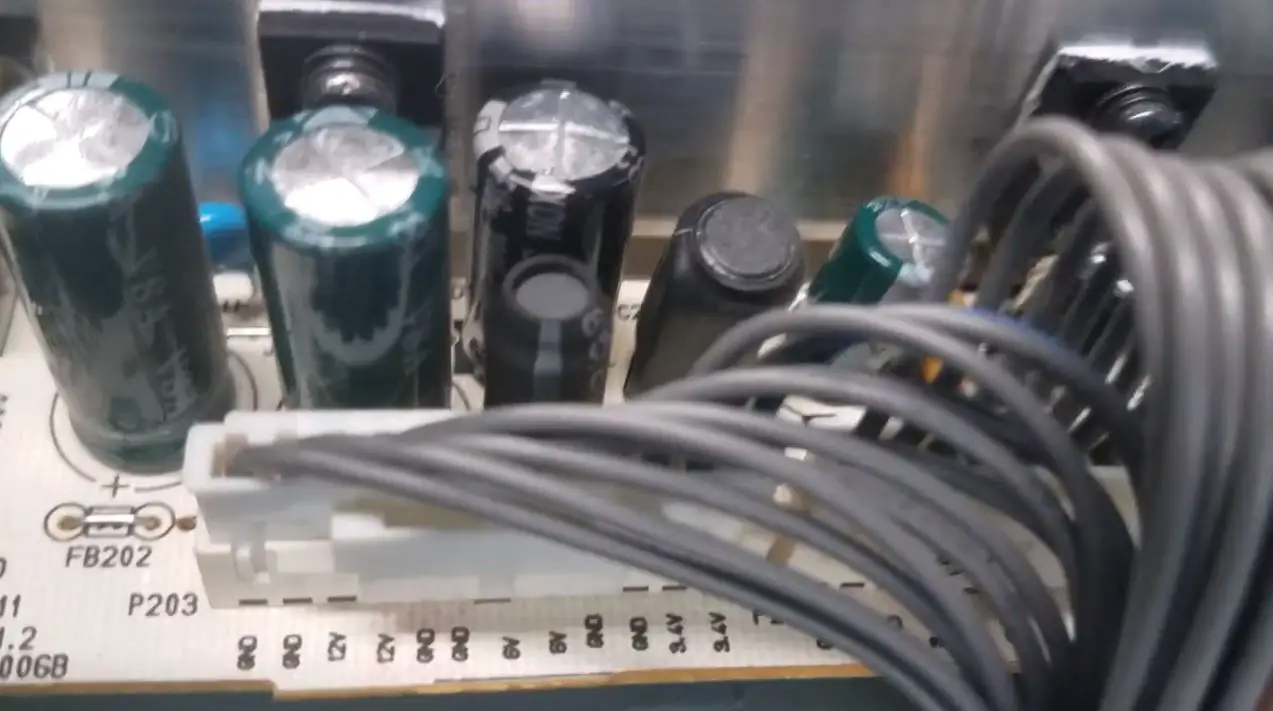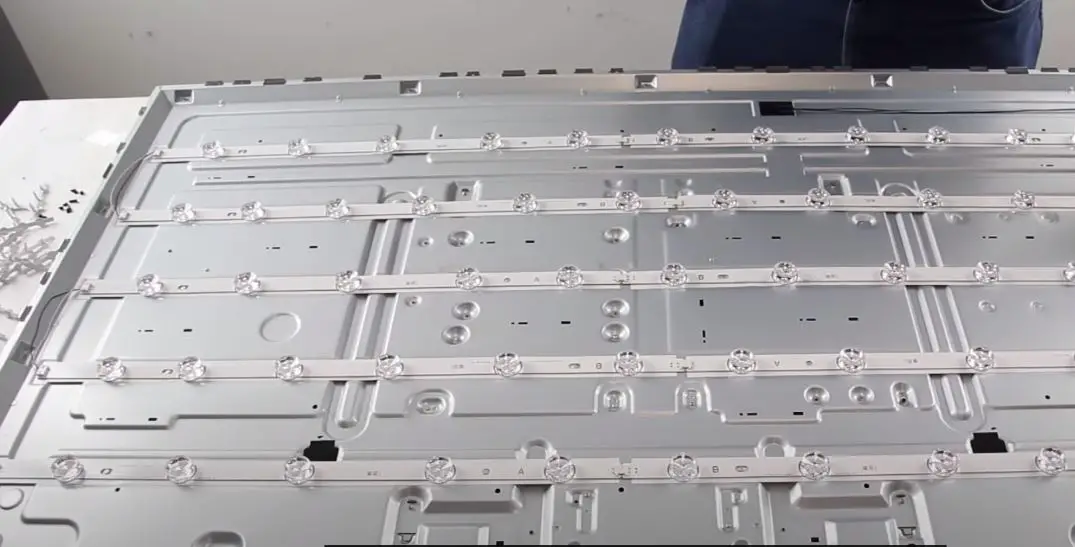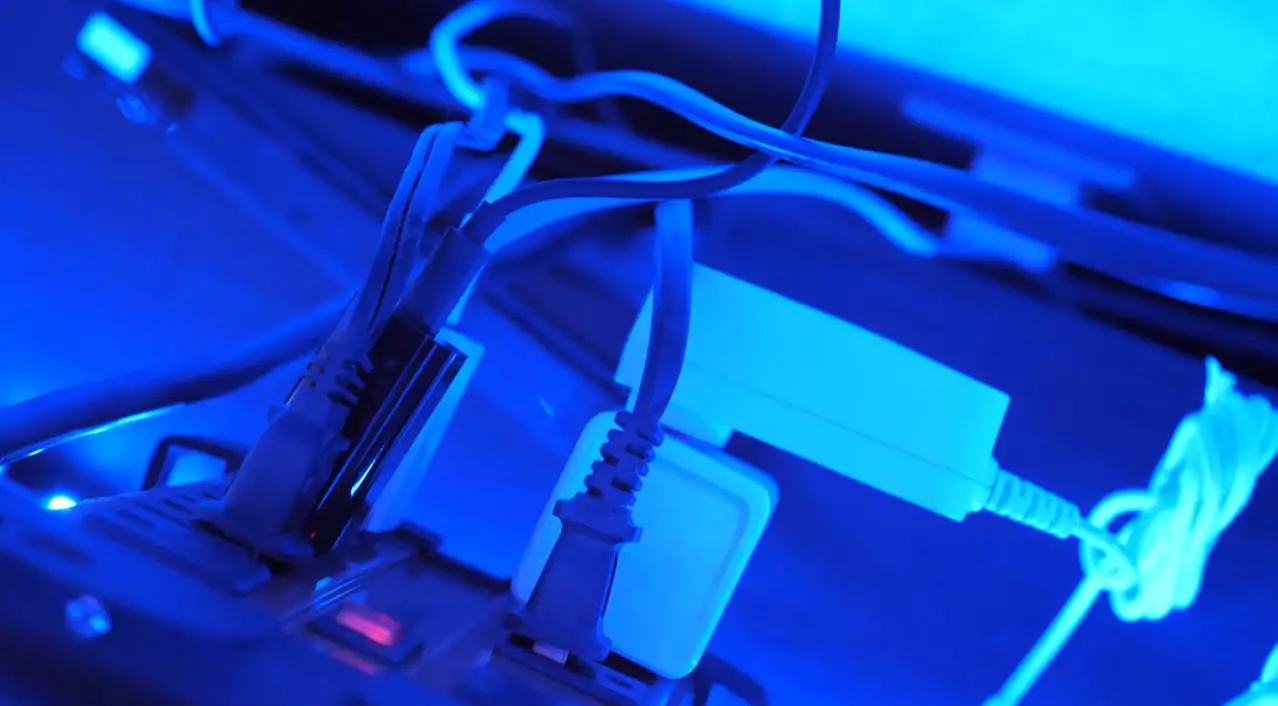LG TVs are well-known for their innovative technology and sleek designs. However, like any electronic device, they can sometimes develop technical issues. One common problem that LG TV owners face is mysterious blinking light patterns.
These blinking codes indicate an underlying problem within the TV. Without the proper knowledge and tools, decoding these codes can confuse the average user. This guide is a comprehensive manual on interpreting blinking light patterns and applying proven solutions to get your LG TV up and running again.
What Do Blinking Codes on an LG TV Mean?
LG TVs utilize an LED light system to communicate basic diagnostic information. Through blinking patterns, the LED lights indicate the possible area where the root cause of a technical malfunction may be located.
For example, if the red standby light blinks twice, followed by a pause, continues blinking twice again, and this pattern repeats, it signifies that there may be an issue with the T-Con board connection. A constant blinking may point toward a backlighting or power supply unit failure.
So, in essence, blinking codes act as troubleshooting clues regarding complex problems in LG TVs that may not have obvious solutions for the average user.
Common Causes of LG TV Blinking Codes
There are several key components within modern slim LED TVs that, if damaged or defective, can cause blinking codes to appear. These include:
Faulty or Loose Connections: Issues with cable connections between internal components or external devices can cause blinking.
Software Errors: Outdated software and firmware can sometimes lead to system crashes, signified by blinking standby LEDs.
Power Surges: Irregular power voltages can damage susceptible circuit boards and trigger blinking as the TV continually tries to reboot.
Overheating: Insufficient cooling inside the TV cabinet can cause certain boards to malfunction.
Old Age: General wear and tear of components after prolonged usage periods can eventually lead to failures.
Necessary Tools and Safety Measures
Before beginning to troubleshoot any LG TV blinking light issue, make sure you are equipped with the right tools for the job:
- Phillips and Flathead Screwdrivers: For unscrewing the back TV cover safely.
- Flashlight: To illuminate the insides of the TV cabinet to locate components.
- Multimeter: For testing voltages and continuity of boards and connections.
- Protective Gloves: Safeguard against electric shocks from exposed components.
- ESD Wristband: Prevents static discharge that can damage boards when handling them.
It’s also crucial to exercise caution when working with the internal electronics of any TV. Some key safety guidelines are:
- Unplug the TV before opening the back cover.
- Do not plug in or power on the TV unless all covers have been properly screwed back.
- Avoid handling boards when the TV is still connected to a power source.
- Refrain from touching exposed soldered joints on boards as they may still carry electric charge.
With the right tools and safety practices, you can avoid accidents and correctly diagnose the patterns of blinking LED lights.
Step-by-Step Procedures to Fix Various LG TV Blinking Codes
1. 1(One Blink) – Main Board or Main Integrated Circuit Issue
A single red blink indicates a malfunction with a TV’s main integrated circuit or main board. These crucial components work in tandem to relay signals across other hardware parts responsible for power regulation, video processing, and functionally controlling the TV.
Overheating, power surges, or physical damage can cause them to behave erratically – as one blinking red light shows. Try the following to address this:
Inspect Main Board and Components:
- Unplug the TV, unscrew the back cover, and gently pull out the main board.
- Check for visible damage, burnt marks, or bent pins.
- Use a multimeter to check the continuity of circuits.
- Look for damaged heat sinks causing overheating of processors and ICs.
Replacing the main board with an equivalent unit is best if issues are noticed. While individual ICs and components can be swapped out, doing so requires advanced micro-soldering skills. Complete main board replacement is easier and resolves related software issues also.
2. 2(Two Blinks) – T-Con Board, Backlight or Capacitor Issue
Two blinks on start-up or while operating, followed by the screen backlight shutting off, but the TV stays on, indicating three possible causes – the T-Con board, LED backlight strips, or blown capacitors. Here is how to narrow down the exact issue:
Check T-Con Board:
The T-con or timing controller board provides essential signals for screen backlights and image data transfer.
- Unplug the TV and detach the board from the chassis using a screwdriver. Check for visible damage.
- Power on TV without board connected. If the TV functions minus a backlit screen, then the T-Con board is likely faulty and needs replacement.
Inspect Backlights:
Modern slim LED TVs utilize LED strips along the edges of the panel for illumination. Faults in even a single LED can cause an entire backlight failure.
- In a dark environment, shine a flashlight onto the screen. Check if the image is faintly visible, implying partial LED outage, or if the backlight is completely unresponsive, indicating full failure.
- For the latter, replacing the entire LED strip set requires delicate panel disassembly.
Test Capacitors:
Aluminum capacitors on power boards act as charge reservoirs. They can blow out due to prolonged heat exposure degrading internals.
- Locate large silver cylindrical capacitors on power supply boards.
- Check for visual signs of damage, like bulging tops or leaked electrolytes.
- Use a multimeter to test capacitance for anomalies – refer to schematics for rated values.
- If issues are noticed, replace damaged capacitors with identical or higher voltage/temperature spec units.
3. 3(Three Blinks) – Power Supply Unit or Motherboard Issue
Standby mode is essential for quick TV start-up. Blinking codes during this indicate failure to initialize components required for activation due to faulty motherboards or power regulation issues. Potential solutions include:
Verify Power Unit Outputs:
The power supply unit converts AC mains voltage into stable DC voltages like 5V, 12V, and 19V fed to internal parts.
- Detach the power unit board and check outputs with a multimeter as per labeled ratings.
- If abnormal voltage readings are noticed, replace the power supply module.
Inspect Motherboard Condition:
The motherboard facilitates communication between components and coordinates TV functionality.
- Carefully examine for damaged ports, degraded circuits, or leaked capacitors.
- Use a multimeter to check the continuity of electronic paths.
- If physical damage is noticed, consider replacing the entire motherboard.
Reset CMOS:
The CMOS chip stores custom-configured BIOS information essential for hardware coordination. Resetting it can resolve software issues causing repeated blinking.
- Locate a small shiny CMOS battery on the motherboard.
- Briefly detach and reattach the battery to erase stored launch settings.
- Power on the TV to rebuild fresh CMOS data.
4. 4(Four) or 5(Five) Blinks – Backlight Strip Issue
Consistent blinking limited to four or five times on TV start-up likely indicates problems with the LED backlight system engaged during panel illumination. This occurs due to the following:
- Faulty individual LEDs cause incomplete backlighting.
- Loss of electrical contact between LED strips and a chassis power source.
- Short-circuit tracing back to LED driver ICs on power supply modules.
Fixing options include:
- Locate dead LEDs using a multimeter and jumper for partially visible display around bad units.
- Check solder joints linking chassis and LED strips for cold joints breaking contact. Reflow if required.
- Probe power unit board to identify shorted LED driver ICs. Swap out damaged drivers.
- Complete strip replacement along panel edges is essential for fully dead backlights.
Blue Blinking Light – Power Board Issue
Instead of the usual standby red light, blue blinking indicates the TV successfully initializing but crashing before fully powering on. This points to instability stemming from the power distribution board.
- Examine the board closely, checking for scorch marks implying short circuit pathways.
- Use multimeter probes to isolate damaged sections not emitting expected voltages.
- Replace individual fuse elements or voltage regulator units as required.
- For extensive physical degradation, replace the whole power component board.
White Blinking Light – Connection Issue
LG TVs with smart OS integration use a white status LED for diagnostics instead of red or blue lights. White blinking suggests a temporary data transfer failure with external devices like smart Blu-ray players, gaming consoles, or OTT streaming boxes.
Unstable connections can be fixed by:
- Inspecting quality and integrity of HDMI and USB cables linking TV and companion devices.
- Toggling cables in and out of ports to re-seat loose contacts.
- Trying different ports rules out worn-out socket damage.
- Testing devices with alternate HDMI-certified cables of adequate standards suitable for 4K HDR content reliability.
The issue may also lie with a poorly configured external gadget. Resetting power cycles on connected devices can help identify and isolate the root cause.
General Troubleshooting Tips
In some situations during troubleshooting, your blinking LED issue may have been resolved through an earlier step but oddly persists due to outdated settings.
Attempt a cold reboot to reset various hardware and software parameters to their fail-safe defaults. This helps eliminate previously misconfigured values or unstable memory allocations causing problems.
Power Cycle the TV
Forcing a hard reboot flushes out outdated setting configurations and clears any temporary software glitches to start afresh.
- Unplug the TV power cord from the rear outlet.
- Press and hold the power button on the TV set for 60 seconds to discharge residual static.
- Leave the TV unplugged for 5-10 minutes for the components to reset fully.
- Reconnect the cord and power on the TV set once again.
Check Connections and Cables
Faulty ports and cables should always be the first items inspected during electrical device troubleshooting as they are prone to maximum physical wear.
Carefully check that all display connectors and wires between the TV set, outlet power socket, and auxiliary gadgets like set-top boxes are fully plugged in. Examine them closely for broken pins or exposed internal wiring, implying internal short circuits that can trigger blinking codes. Replace damaged wires and leads.
Open Up TV Cabinets and Inspect Internal Components
While blinking patterns provide clues to isolate issues to specific boards, accurate fault pinpointing may require visually examining internal electronics by dismantling the external shell.
But remember – always unplug the TV before disassembly to avoid getting shocked. And precisely follow all unit reassembly instructions to restore proper chassis grounding and shielding for smooth performance afterward.
Common inspection objectives when opened include –
- Checking the condition of long ribbon wiring harnesses between boards for malfunctioning data lanes.
- Examining board soldered electrical contact points for cracked or cold joints losing conductivity intermittently.
- Probing circuits by connectivity tracing to identify improper shorts tripping safety cut-offs.
- Visually inspecting capacitors for damage which can manifest as blinking codes.
Replace circumscribed damaged parts or full circuit boards as dictated by ongoing diagnosis results. Consult authorized service manuals for technical specifications and layout diagrams as required.
When to Call a Professional
Despite following a meticulous troubleshooting approach, some models may continue displaying blinking LED patterns and remain fault unresolved. This frustrating scenario with rare intermittent issues generally occurs due to –
- Exotic, customized proprietary boards requiring specialized programmatic access tools to diagnose faults.
- Sophisticated microprocessor-controlled unit logic needing intricate debugging.
- Newer OLED and QLED models have delicate panel electronics and signal timings sensitive to even minor tinkering. In such cases, it’s best to entrust repairs to experienced certified LG TV technicians equipped with necessary fault signal reading tools, spare components inventory, and micro soldering workstations.
Specialized repair centers can source required replacement boards and modules directly if needed and provide a limited workmanship warranty. The incremental costs make sense for preventing accidental damage to expensive big-screen TVs.
Rounding Up
We hope this detailed guide covering possible causes and practical troubleshooting tips helps decode confusing blinking light patterns plaguing your LG television. While blinking codes may seem intimidating initially, methodically following corresponding step-by-step interventions highlighted here will lead to a quick and satisfactory resolution in most cases. But consulting professional LG TV repair services is a wise way forward for trickier chronic hardware issues requiring microcomponents level inspection or firmware reprogramming not discussed.









